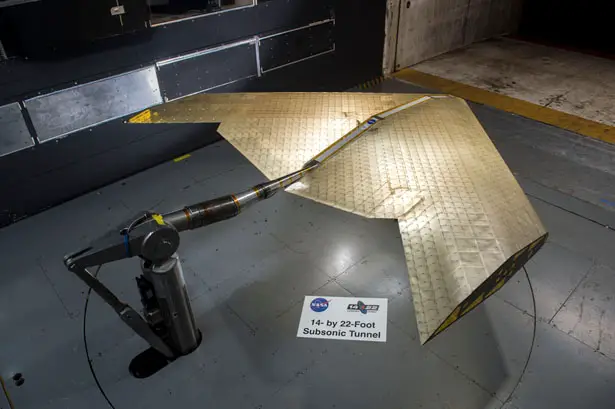Future aircrafts would have flexible wings that would allow lighter and more energy efficient operation. MIT and NASA engineers have teamed up to design and develop shape-shifting airplane wings. They have built and tested radically new type of aircraft wing, which is assembled from hundreds of tiny identical pieces. This concept wing can change its shape to control the plane’s flight while delivering significant boost in flight and maintenance efficiency.


Using this new approach from MIT and NASA engineers, the new wing construction is able to deliver greater flexibility in the design and manufacturing of future aircraft. The new system makes it possible to deform the whole wing or parts of it, it incorporates a mix of stiff and flexible components in its structure. The tiny subassemblies, which are bolted together to form an open, lightweight lattice framework, are then covered with a thin layer of similar polymer material as the framework.
The structure of this shape-shifting wing is composed of thousands of tiny triangles of matchstick-like struts, it forms a mechanical “metamaterial” for structural stiffness of a rubber-like polymer yet with extreme lightness and low density of an aerogel. During take-off and landing, cruising and maneuvering, each wing has its own set of optimal parameters, it means that conventional wing is a compromise not optimized for any of these, thus, sacrificing efficiency. Therefore, a flexible wing that is constantly deformable would provide a much better approximation of best configuration for each stage. This wing is an autonomous wing that is able to self-adjusting depending on changes in its aerodynamic conditions.










Apply to the pending SST , HST, next gen jetliners